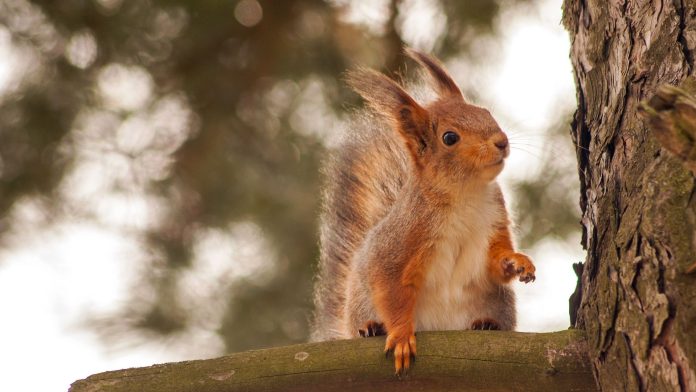[ad_1]
A brown rabbit, a wild boar, a fox, a squirrel, an owl – anyone who thinks that there are no exciting animal species in Germany is wrong. Recently, raccoons, lynx, elk and bison have also been living in Germany.
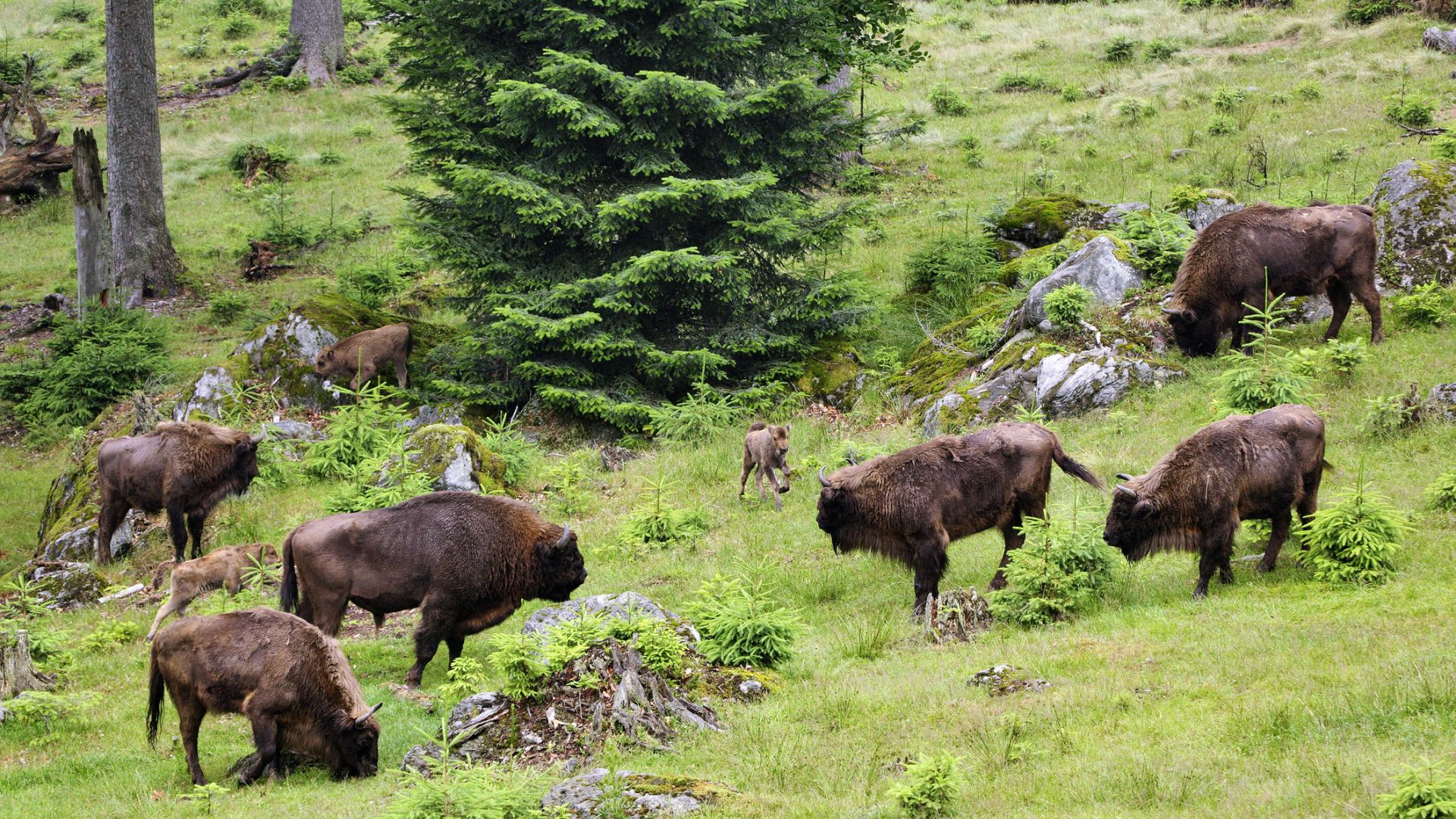
Freyung-Grafenau: Bison in Bavarian Forest National Park
©Getty Images (Manfred Gottschalk)
About 48,000 animal species live in Germany’s forests, meadows and mountains. Most of them are insects, but 328 species of birds, 104 different mammals and several amphibians and reptiles are also at home here. In order to protect wildlife, Germany has many parks and nature reserves. For example, about 10,300 plant species and 14,400 fungal species are listed here. These protected areas not only provide an important means of livelihood for well-known species such as deer, wild boar and squirrels: thanks to many reintroduction projects, extinct species can also found in Germany: for example, the type of buffalo. has been happily grazing in the Rothaargebirge in Bad, North Rhine-Westphalia, since 2013 in Berleburg. A nature conservation project with a nature playground and a nature experience center can be visited and offers guided tours. Deer also appear in Germany, especially in Brandenburg, where there is a small colony in the Schorfheide wildlife park. In general, the state of Brandenburg is getting worse: as in other countries, the wolf is living here again, and sometimes you meet a beaver. And not only Brandenburg is captured, for example, Berlin, is considered the capital of wild animals.
Fox, Hare & Co.: at home in Berlin
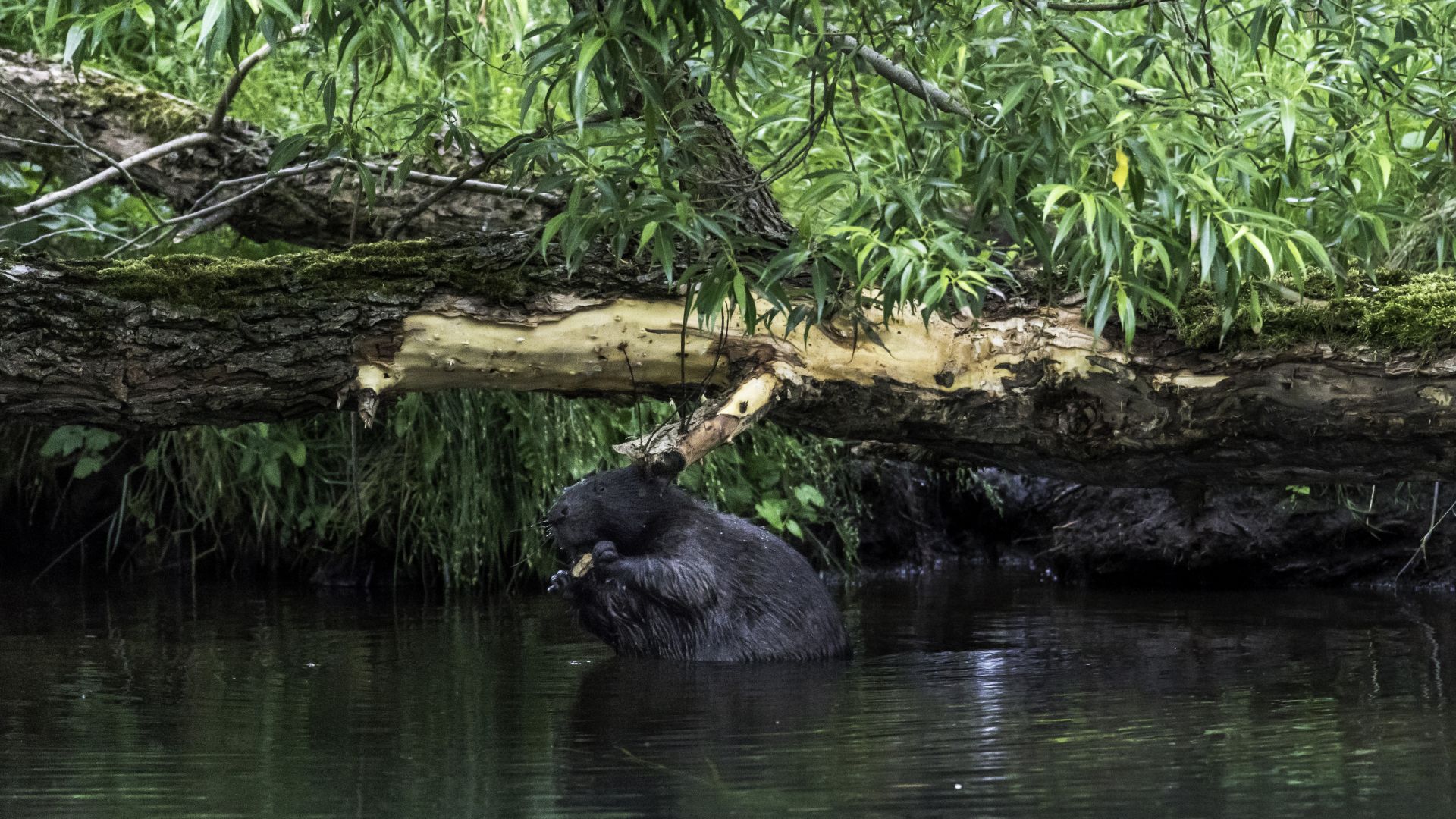
Spreewald: A beaver knocks on a tree by the river
©Lookphotos (Martin Siering)
More than 230 species of wild animals are listed there. The red fox has long been an integral part of the city of Berlin and roams parks, backyards and even the streets at night. Therefore, the German Wildlife Foundation offers guided tours for children through their nature study course in Berlin. Local wildlife is explored in the meadows and parks, and there you will find the brown hare – one of Germany’s most famous wild animals. Several million models are popping up happily around the country. Lynx can also be found regularly: in Germany, about 140 lynxes live with their young in ten federal states. More than 1,000 wild cats also live in the Eifel National Park near Cologne. It is one of the most important wildlife populations in Central Europe: over 110 kilometers, wild cats share space with red deer and even beavers.
Also found: a bearded vulture in the Bavarian Alps
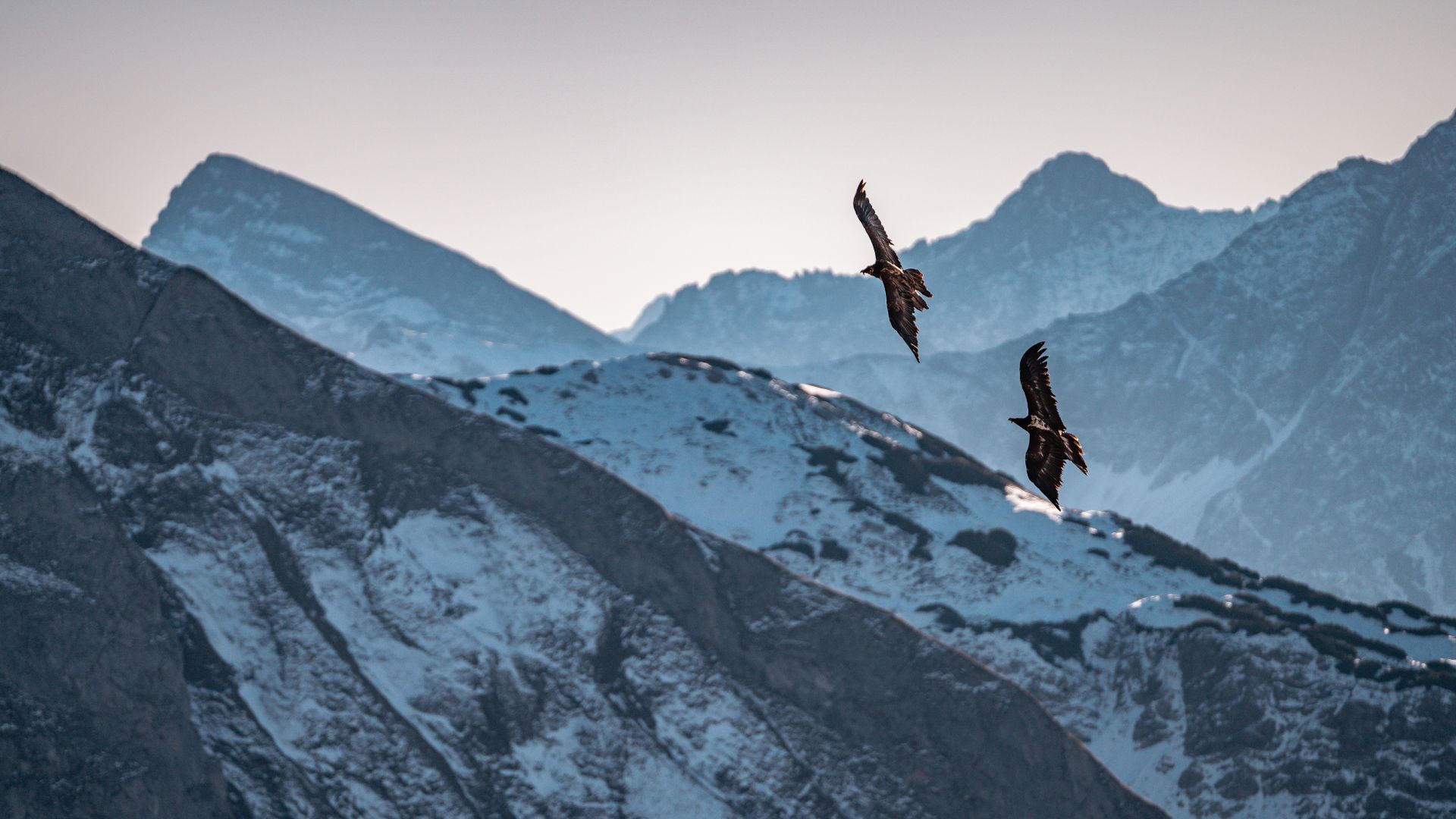
Allgäu Alps: Bearded vulture over the mountains
©Adobe Stock (Basti Heckl)
The diversity of the German landscape is reflected in the different animals that live there. It’s not just the Alps that have their own flora and fauna. A perfect place for the bearded vulture, for example, which has been here for a long time. Thanks to the international restoration project of Nuremberg Zoo and Berchtesgaden National Park, 233 little vultures are back at home in the Bavarian Mountains. The moor duck, on the other hand, found a home in Lower Saxony, and the owl is now breeding again in the northern Harz mountains and Nuthe-Nieplitz Nature Park. The wildlife and biodiversity station of Sachsenhagen in Lower Saxony, which can be visited again, is responsible for this.
Save species, see species: Hessian Opel Zoo
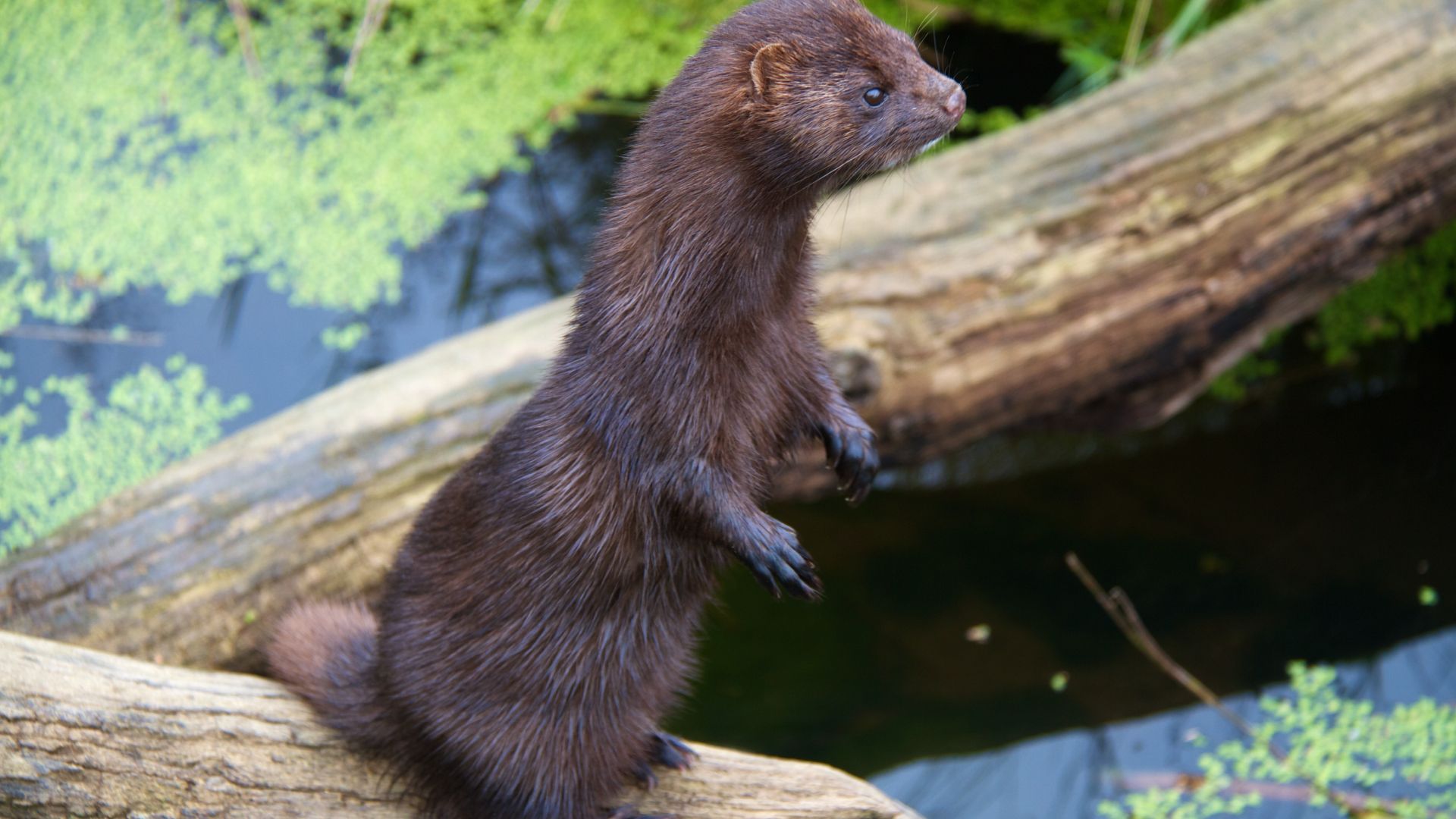
An American mink standing by the water
©Adobe Stock (Michael Robbins)
The Opel Zoo in Hesse is also worth a visit, not only because it has a large playground and is also home to giraffes and elephants. Opel Zoo participates in a total of 33 international conservation breeding programs for reptiles, birds and mammals. Minks, little owls and pond turtles are raised and released into the wild. For example, the mink is one of the most endangered animal species; The Berlebeck eagle observatory near Dortmund is one of the richest and most diverse bird observatories in Europe and has already taken several nesting owls to the zoo. The eagle observatory also has a small owl reintroduction project, and anyone interested in the amazing animals can visit the air show there.
I am fascinated by the migration of cranes: Bird days in Germany
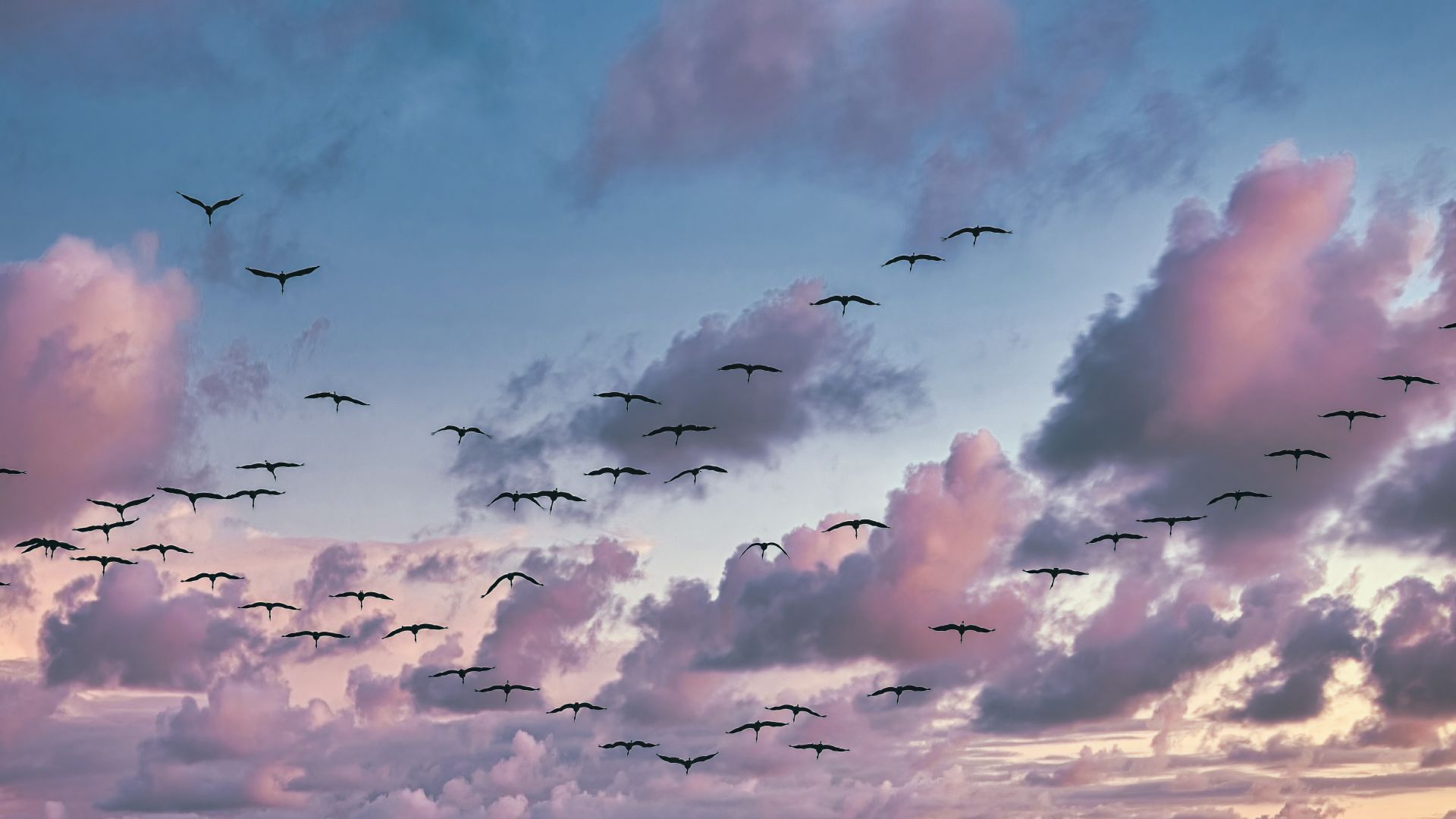
Linum: birds that migrate at sunset
©Lookphotos (travelstock44)
The European pond turtles, located in the Kühkopf-Knoblochsaue nature reserve on the Rhine in Hesse, also come from the Opel Zoo. It is the largest remaining floodplain in the northern part of the Upper Rhine and home to countless animals. Early in the morning, wild boars, deer, turtles and countless birds such as spotted cranes, bullfinches, yellow-faced scofflaws and birds of prey can be seen there. In addition to 250 species of birds, twelve species of bats also live here. Any bird enthusiast will also look forward to watching their southern migration in the fall. Because it is a wonderful miracle of nature when, for example, thousands of stars fly in harmony towards the south. It’s fun to follow the cranes on their long journey with binoculars for a while. For bird lovers, NABU offers special bird watch days in the fall. Cranes and geese can be seen in late September and October in Lusatia, but also in Bremen, Brandenburg, Lower Saxony or Mecklenburg-Western Pomerania – even from a boat or bicycle.
[ad_2]


